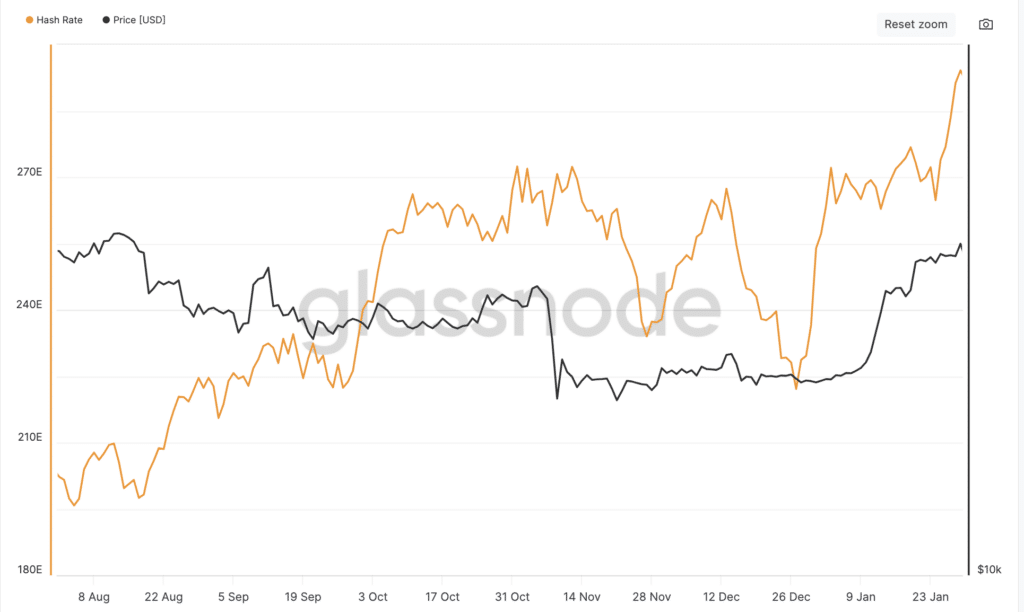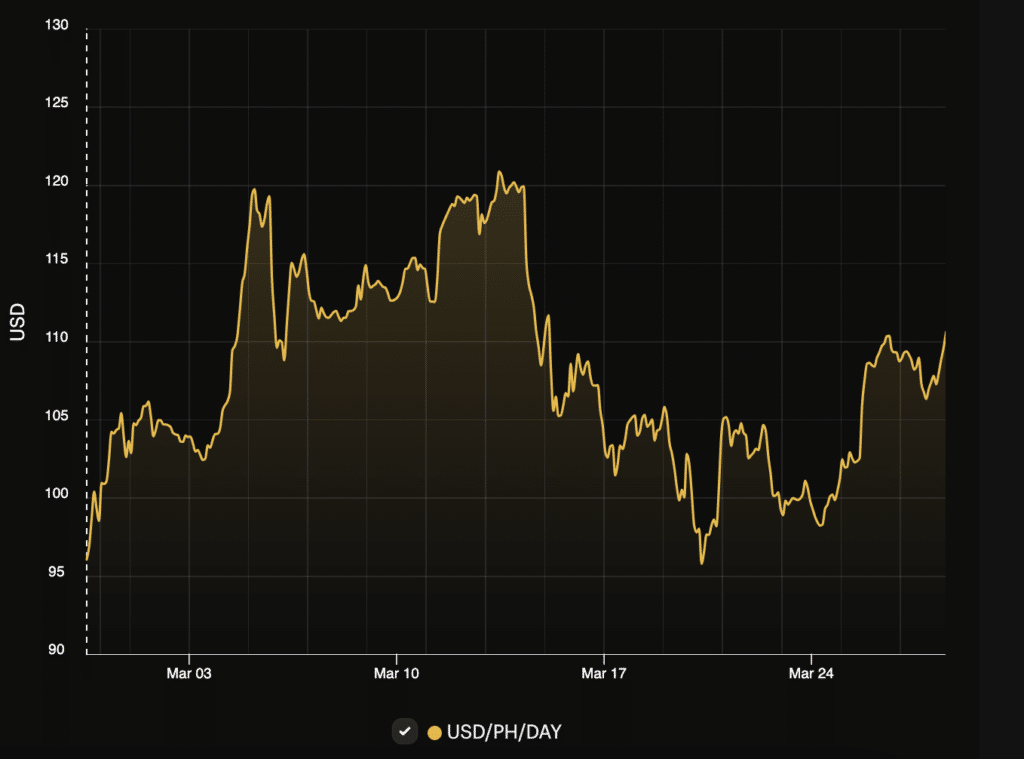As a result of the next recalculation, Bitcoin mining difficulty decreased by 0.97% to 83.13T.
The average hashrate for the period since the previous value change was 599.71EH/s. The span between blocks is 10 minutes and 7 seconds. Mining difficulty determines the total hardware capacity required to mine Bitcoin (BTC). If this indicator increases, the halving of the first cryptocurrency is approaching. Under certain conditions, this could occur in April 2024.

According to Glassnode, the 7-day moving average peaked at 614.9EH/s on March 24. It was later adjusted to 586.1EH/s.

According to Hashrate Index, hash prices have increased from $108 to $110 per PH per day in the last 24 hours.

On March 14, Bitcoin mining difficulty reached an updated historical high, reaching 83.95T. Since the date of the last change, the indicator has increased by 5.79%, and the average hashrate of the Bitcoin network has reached 600.72EH/s.
Meanwhile, Bitfinex experts believe that institutional funding from public companies could disadvantage individual and small-scale miners and have long-term effects on network dynamics.
Bitfinex experts pointed out that the influx of capital and the ‘specialization’ of mining operations has led to an increase in hashrate, improving the overall security and stability of the network. Wall Street investor funding of corporate mining has therefore fundamentally changed the incentive structure of the network.

